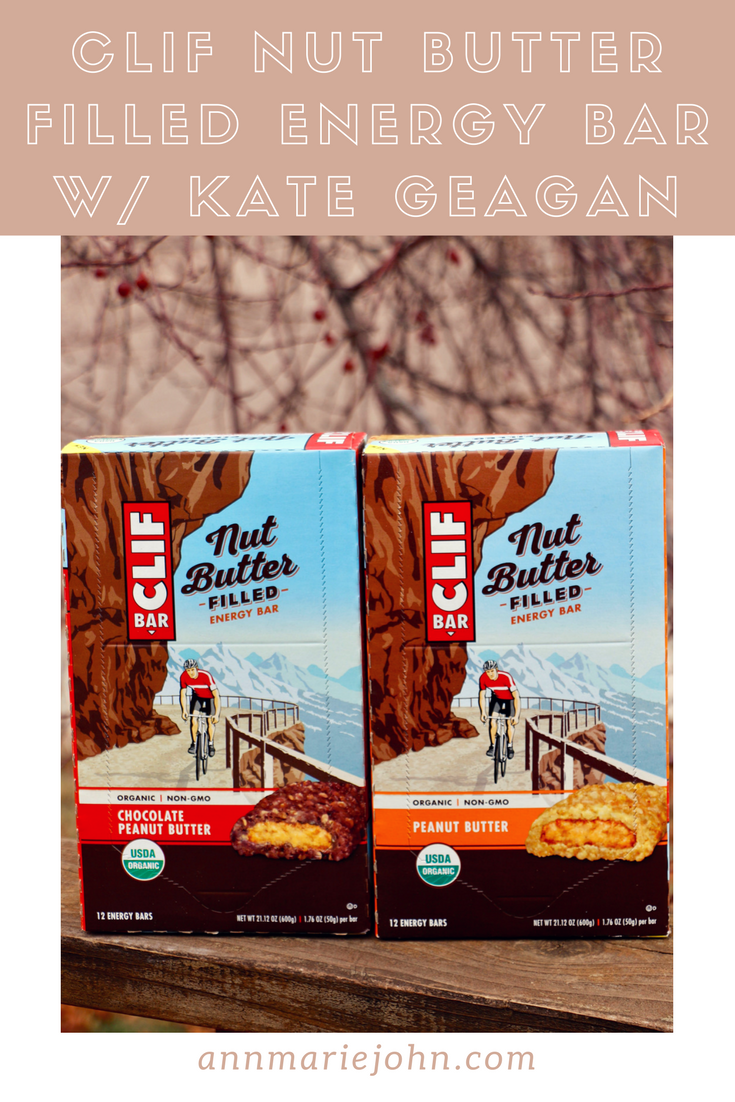
If you’re anything like me you may have always wondered what’s the difference between Organic and Non GMO. Whenever I go food shopping I tend to shop more at stores that offer more organic options but have never really understood the difference between the two options. When it comes to energy bars, there are a few that I tend to lean towards and one of them have always been the brand CLIF. I was first introduced to the brand a few years ago when a sample CLIF bar was sent in a subscription box for my daughter and since then it has been one of my choices when shopping for energy bars. It was also good to know that CLIF products are also organic and Non GMO as well.
I have boys who are very active and participate in sports, so having energy bars in the house is something that I always have to have on hand. CLIF Nut Butter Filled Energy Bars are organic energy bars filled with delicious, creamy nut butter. The athletes and foodies in the Clif kitchen have crafted a whole new kind of energy bar which brings together two great energy foods – a delicious, creamy nut butter inside an organic energy bar – to deliver sustained energy.
The CLIF Nut Butter Filled Energy Bars are USDA Organic, Non-GMO and made with delicious, creamy peanut, hazelnut or almond butters. They also contain 7 grams (9% DV) of plant-based protein, and are low glycemic.
Want to Learn More About Non-GMO? Expert Kate Geagan, MS, RD is here to tell you all about it.
So what are GMOs?
GMOs are organisms—including plants and vegetables—that have been genetically engineered with DNA from bacteria, viruses or other plants and animals. That’s not Mother Nature at work. Those are lab experiments creating combinations of genes that can’t occur in nature or be bred via traditional plant breeding. Some GMO corn and soybean varieties, for example, have had their DNA altered to make them resistant to chemical herbicides or to produce their own pesticides.
Where do GMOs show up in food?
There are actually just a handful of GMO crops, but it’s estimated they are present in approximately 70 percent of processed foods in supermarkets.1 GMOs are a recent experiment. The first commercial sale of genetically engineered food dates back only to 1994. At least 26 countries worldwide2 totally or partially ban GMOs, and more than 60 countries require GMO labeling.3
Why avoid them?
Studies show that GMO crops lead to the increased use of toxic chemicals, herbicides and pesticides in conventional farming, elevating the risk of toxin exposure to the general public and especially farming communities.4 Toxic pesticides and chemicals have been linked to birth defects, nerve damage and cancer,5 with children and pregnant women most at risk. Toxic chemicals also pollute our waterways, oceans and air.
Clearly, that toxic cycle of agriculture can’t go on indefinitely. It’s unsustainable. GMOs are simply the latest Band-Aid on a broken system—a faulty tool in the conventional, chemically-dependent farming system. We can and must do better—and the major growth in organic food purchases by consumers is just one example that we are beginning to head in the right direction.
BIO: KATE GEAGAN, MS, RD
Kate is an award-winning dietitian and “America’s Green Nutritionist,” who has helped millions fall in love with food that powers a vibrant, high energy life. She is an internationally known author, speaker, consultant and nutrition communications expert, as well as a spokesperson for several global brands in the organic and natural space.
Called “a global thought leader in her field” by Discovery Health of South Africa, Kate is helping lead a national conversation which champions cleaner food choices to support a thriving body and planet. She is the author of Go Green Get Lean: Trim Your Waistline with the Ultimate Low- Carbon Footprint Diet.
This is a sponsored post written by me on behalf of Clif Bar & Company. All opinions are 100% mine.
